#Farmer Giles
Text

UK 1987
9 notes
·
View notes
Photo
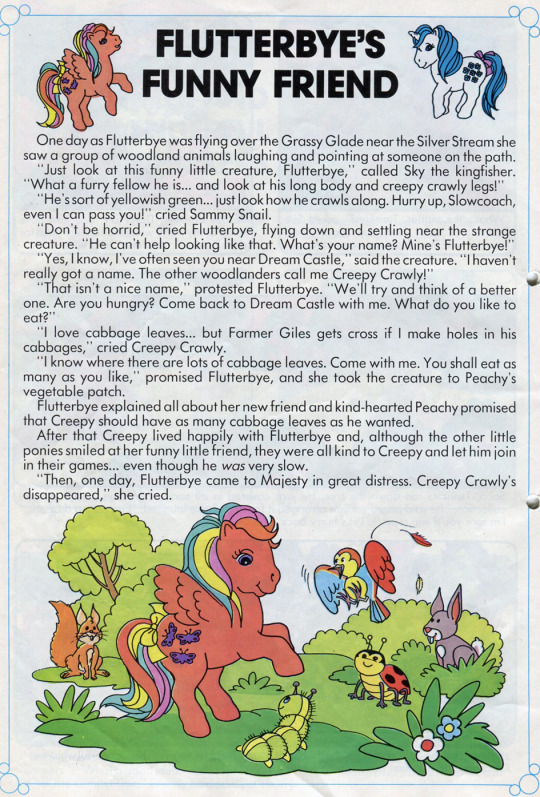
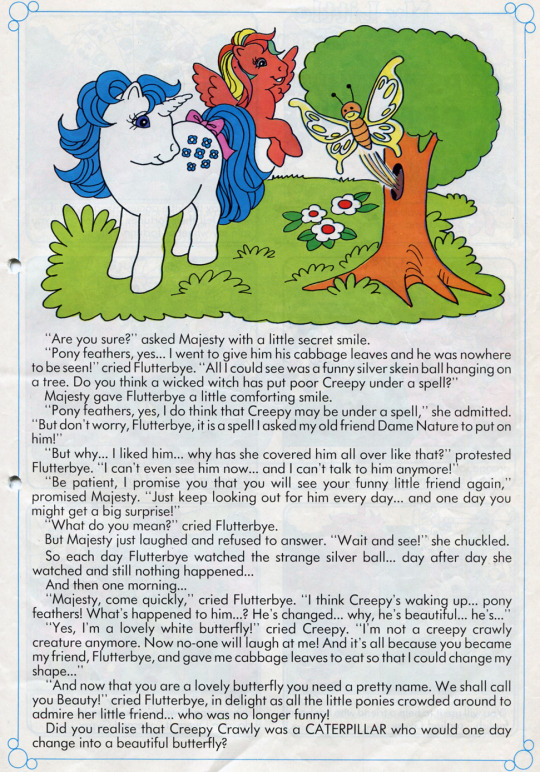
My Little Pony Spring Special 1986 - Flutterbye’s Funny Friend
#Flutterbye's Funny Friend#My Little Pony#G1#Majesty#Flutterbye#Sammy Snail#Grassy Glade#Silver Stream#Sky the kingfisher#Creepy Crawly#Farmer Giles#Peachy#Dame Nature#Beauty the butterfly#comics#comic G1 My Little Pony#issue G1 My Little Pony Summer Special 1986
23 notes
·
View notes
Photo

Another Don Lowry illustration from the “Fantasy Supplement” section of Chainmail (Guidon Games, 1971-72, and Tactical Studies Rules/TSR 1975-85), taking inspiration from a Pauline Baynes illustration in a 1949 edition of Tolkien’s Farmer Giles of Ham:
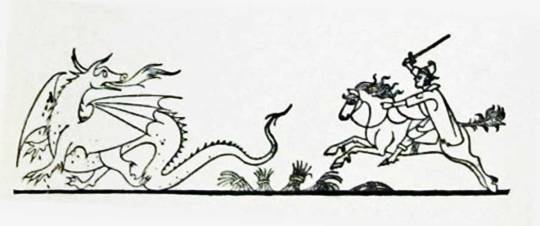
#D&D#Dungeons & Dragons#Don Lowry#Pauline Baynes#dragon#Chainmail#Farmer Giles of Ham#JRR Tolkien#Tolkien#Fantasy Supplement#Guidon Games#Tactical Studies Rules#mounted combat#knight#TSR
148 notes
·
View notes
Text

✨ Smith of Wootton Major and Farmer Giles of Ham by J.R.R. Tolkien
Rating: ⭐️⭐️⭐️⭐️/5
“But what are all these knights and men for, by chance?” he [Farmer Giles] asked. “If you’ve come on a visit, you’d be welcome with fewer. If you want to take me away, you’ll need a lot more.”
I saw a tumblr post recently that said roughly “Tolkien did his best writing about silly farmers instead of solemn elves”. These two tales are proof of that. Every time I try to read The Lord of the Rings, I give up. But all his shorter books have been fantastic. This is another I have enjoyed!
Smith of Wootton Major is a faerie-tale, while Farmer Giles of Ham is a knights-tale. Both are entertaining with fun characters and even better plots. We try our best to understand faerie and we try our best to outsmart dragons. Either way I have enjoyed my time reading this.
#godzilla reads#smith of wootton major#farmer giles of ham#jrr tolkien#book review#reading#book blog#book blurb#booklr#fantasy books#bookworm#bookish#booklover#bibliophile
22 notes
·
View notes
Text
Farmer Giles of Ham by J.R.R. Tolkien with illustrations by Pauline Diana Barnes.

"The farmer went about with a high step, and luck smiled on him. The autumn and early winter work went well. All seemed set fair, until the dragon came."



#j. r. r. tolkien#quote#illustration#pauline diana barnes#literature#farmer giles of ham#bauer giles von ham#lotr#fantasy#dragon#chanson de geste#tolkien
25 notes
·
View notes
Text

Farmer Giles of Ham - A Dragon' s Tail - by Riana-art
It was still custom for Dragon's Tail to be served up at the King's Christmas Feast; and each year a knight was chosen for the duty of hunting. He was supposed to set out upon St. Nicholas´Day and come home with a dragon's tail not later than the eve of the feast. But for many years now the Royal cook had made a marvelous confection, a Mock Dragon's Tail of cake and almond paste, with cunning scales of hard icing-sugar [...]. The Mock Dargon's Tail was eaten after dinner and everybody said (to please the cook) that it tasted much better than Real Tail.
---
J. R. R. Tolkien, Farmer Giles of Ham, p. 114.
3 notes
·
View notes
Text
"He put his arms about the stem of a young birch and clung to it, and the Wind wrestled fiercely with them, trying to tear him away; but the birch was bent down to the ground by the blast and enclosed him in its branches.
When at last the Wind passed on he rose and saw that the birch was naked. It was stripped of every leaf, and it wept, and tears fell from its branches like rain.
He set his hand upon its white bark, saying: "Blessed be the birch! What can I do to make amends or give thanks?"
He felt the answer of the tree pass up from his hand: "Nothing," it said. "Go away! The Wind is hunting you. You do not belong here. Go away and never return!"
As he climbed back out of that dale he felt the tears of the birch trickle down his face and they were bitter on his lips."
-The Smith Of Wootton Major by J.R.R. Tolkien
#the smith of wootton major#jrr tolkien#j.r.r. tolkien#tolkien stories#short stories#fiction#fae#faerie#lord of the rings#the lord of the rings#farmer giles of ham#i LOVE this book so much#it feels me with so many feelings ahhh#quotes#land of faerie
7 notes
·
View notes
Text

Is Giles romanceable???
#fable 2#Giles the farmer#i always play as a girl#so i have no idea if he's actually romanceable#or if it changes to whatever makes him unavailable to you
3 notes
·
View notes
Text
Tales From the Perilous Realm by J.R.R. Tolkien
Title: Tales From the Perilous Realm. Writer(s): J.R.R. Tolkien.Artist(s): Alan Lee.
Publisher: Houghton Mifflin Harcourt.Format: Hardcover.Release Date: November 17th, 2008.Pages: 403.Genre(s): Fantasy.ISBN13: 9780547154114.
My Overall Rating:
⭐⭐⭐⭐
Rating: 3.5 out of 5.
“All tales may come true; and yet, at the last, redeemed, they may be as like and as unlike the forms that we give them as…

View On WordPress
#book#book blogger#bookworm#farmer giles of ham#j.r.r. tolkien#leaf by niggle#on fairy stories#review#roverandom#smith of wootton major#tales from the perilous realm#the adventures of tom bombadil
0 notes
Text
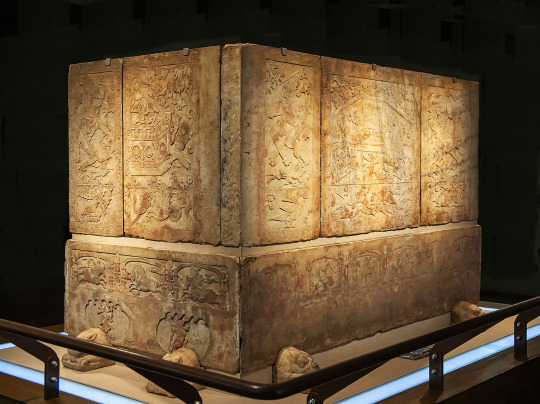

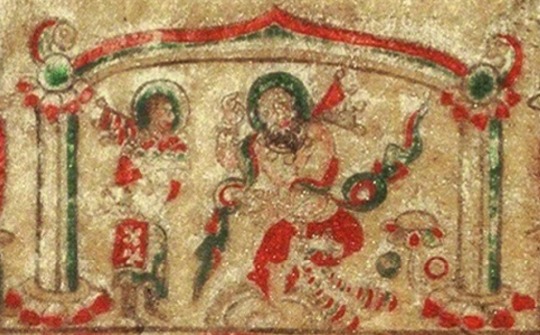

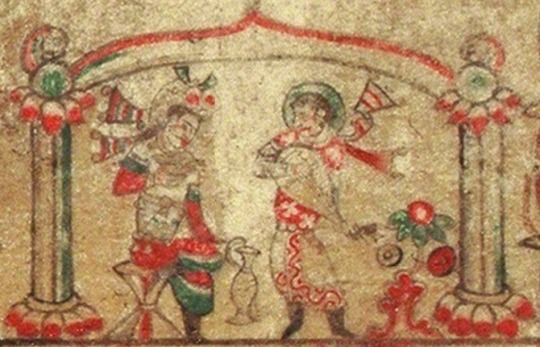




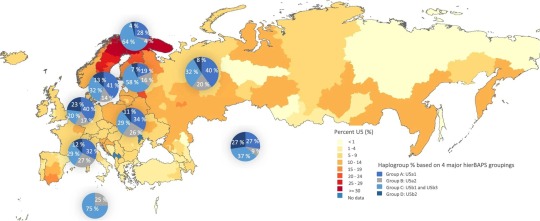

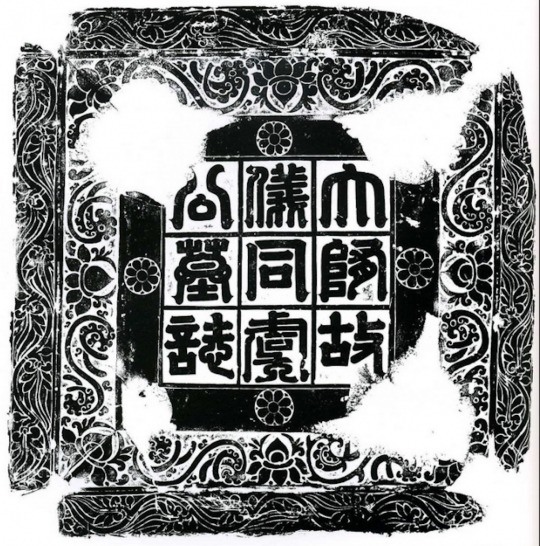
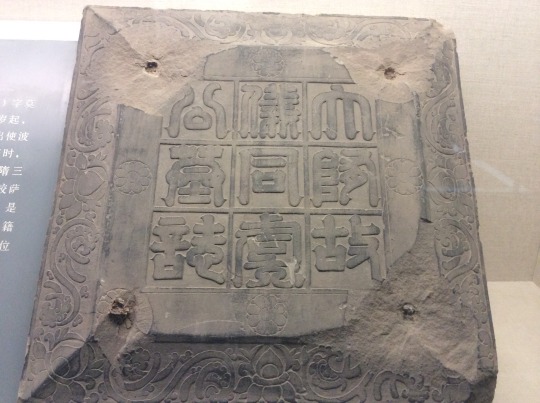

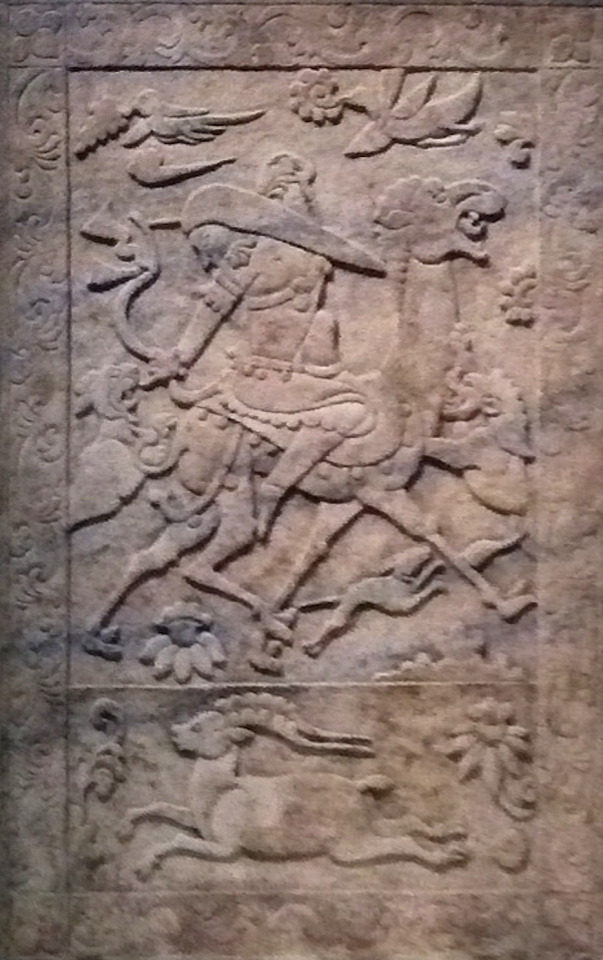
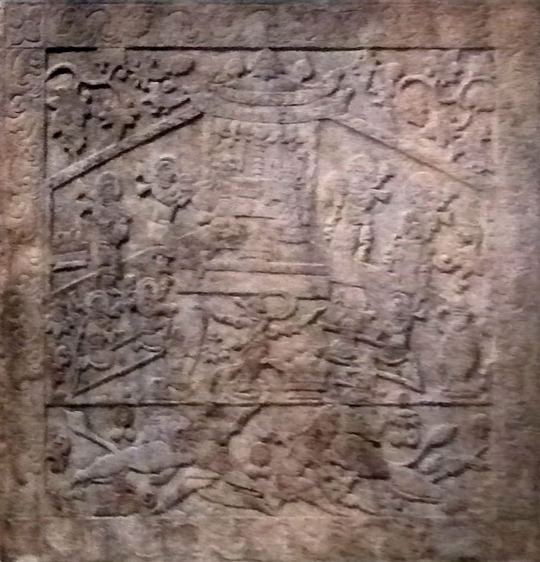
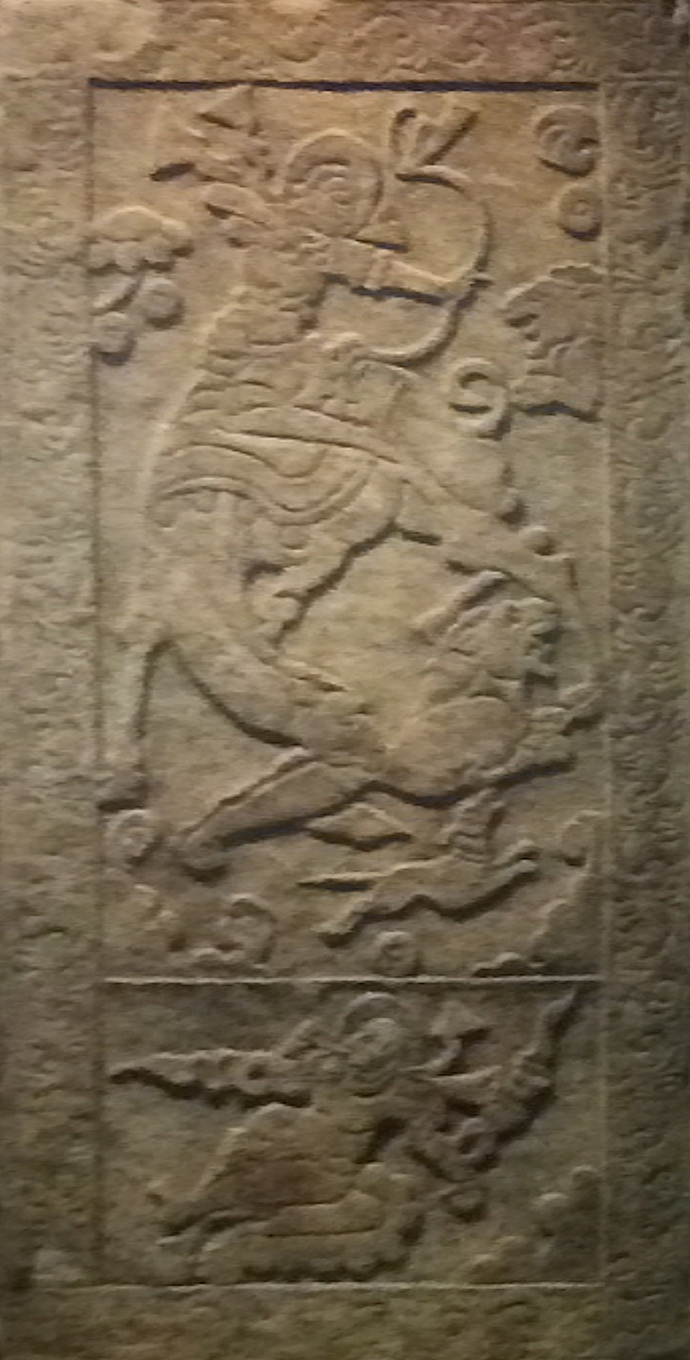
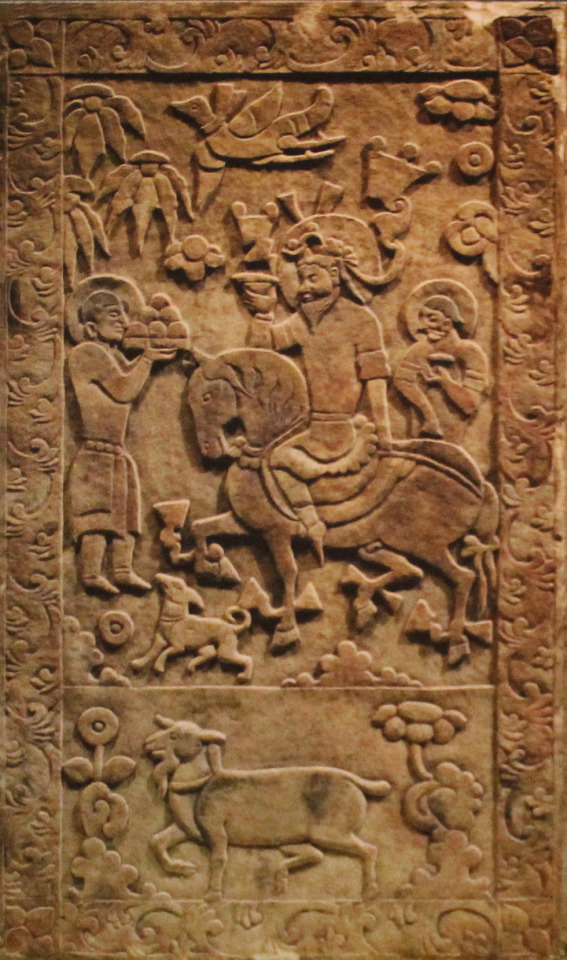
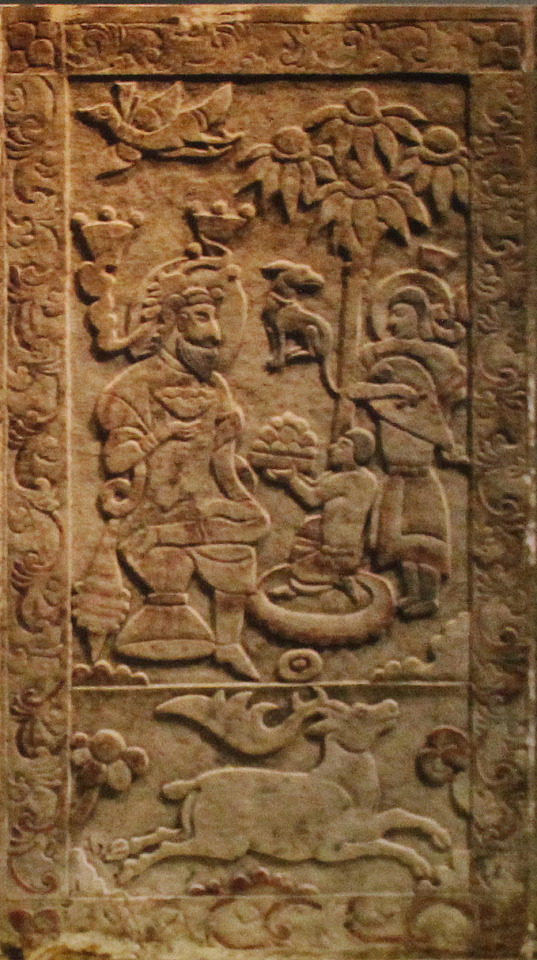
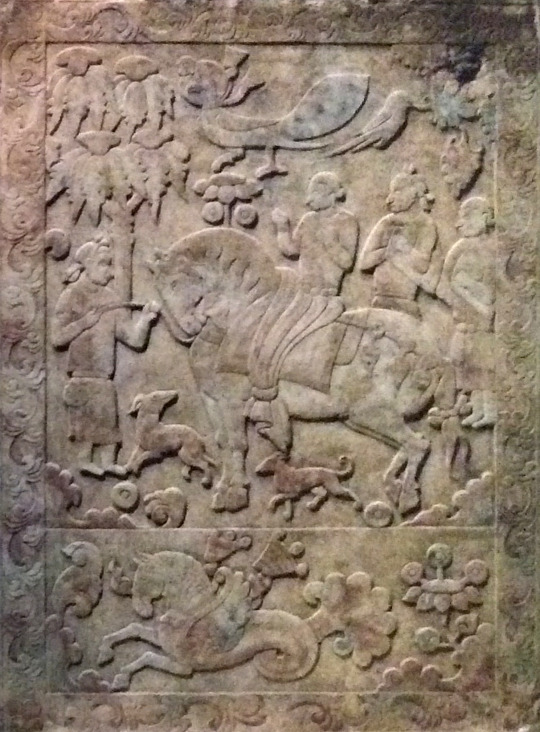
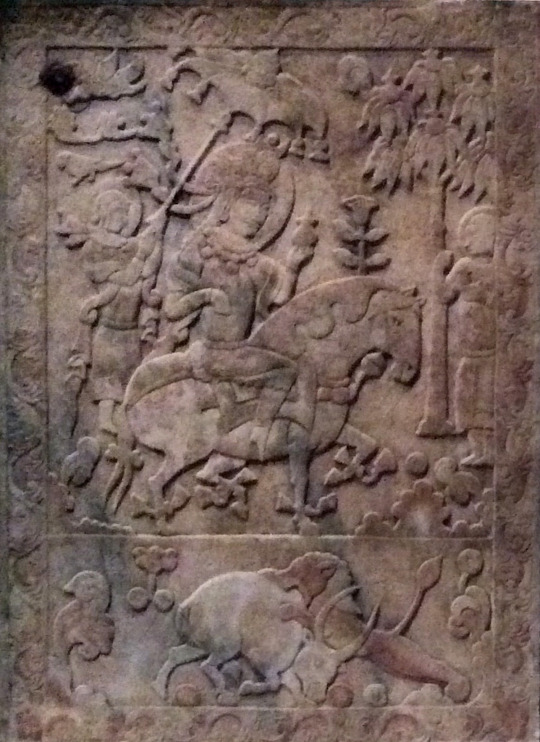
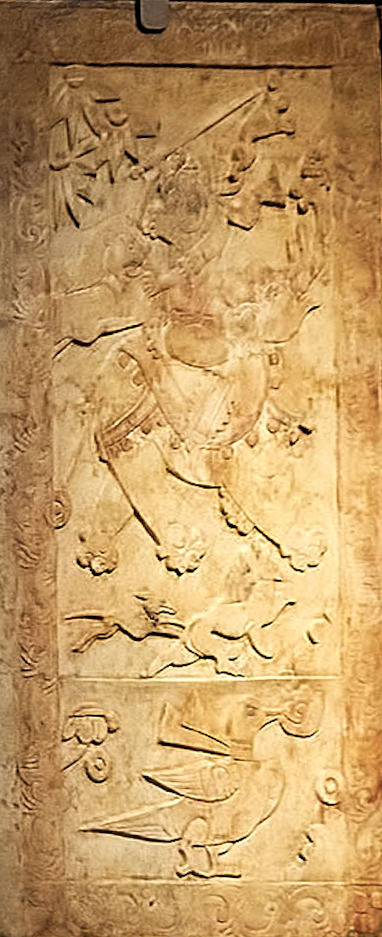
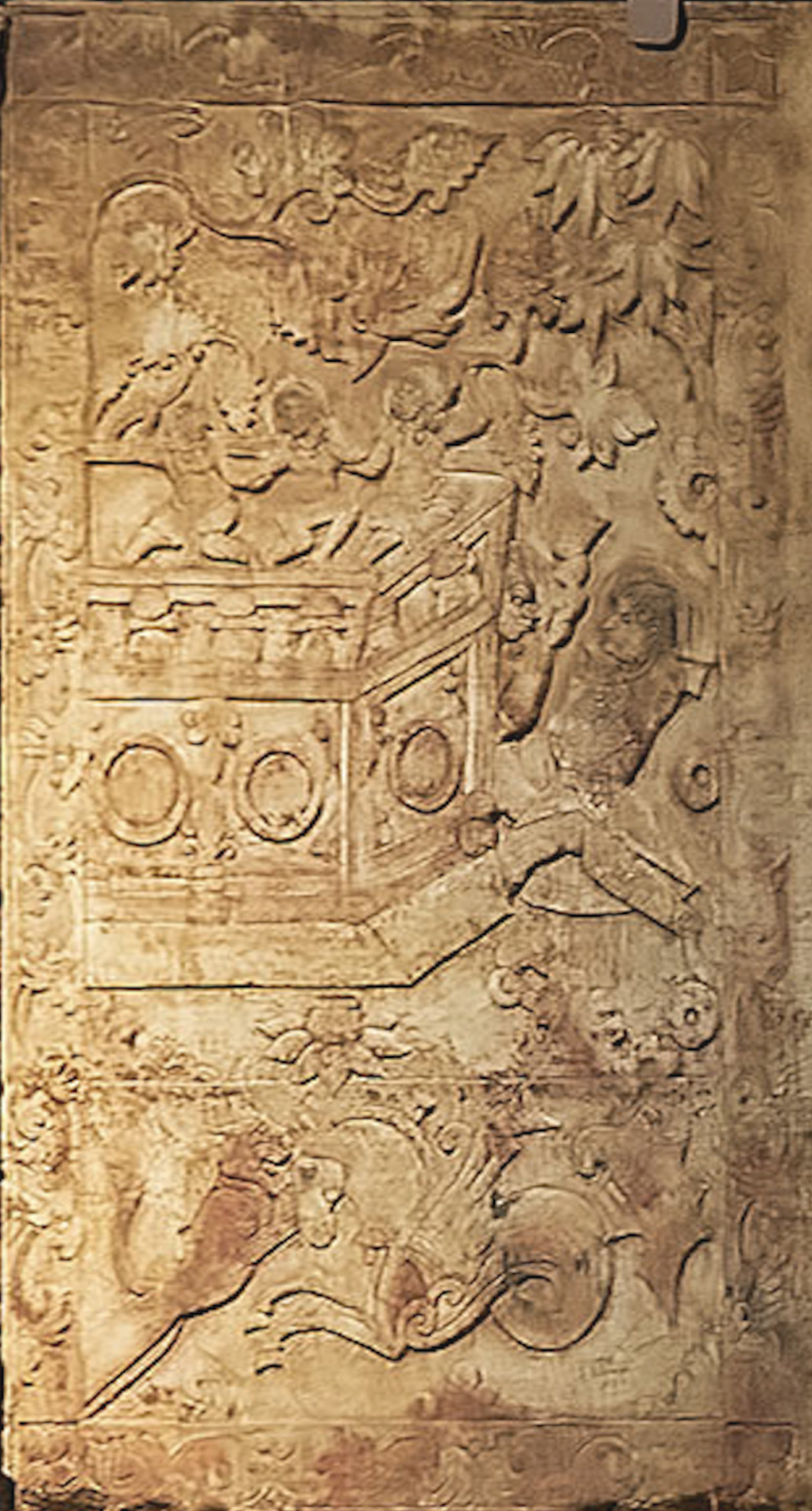

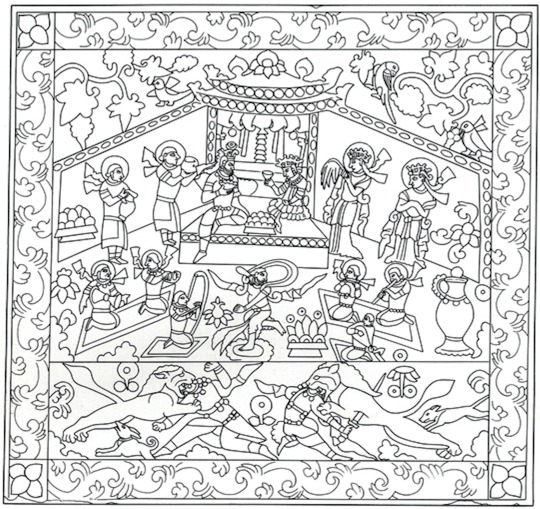
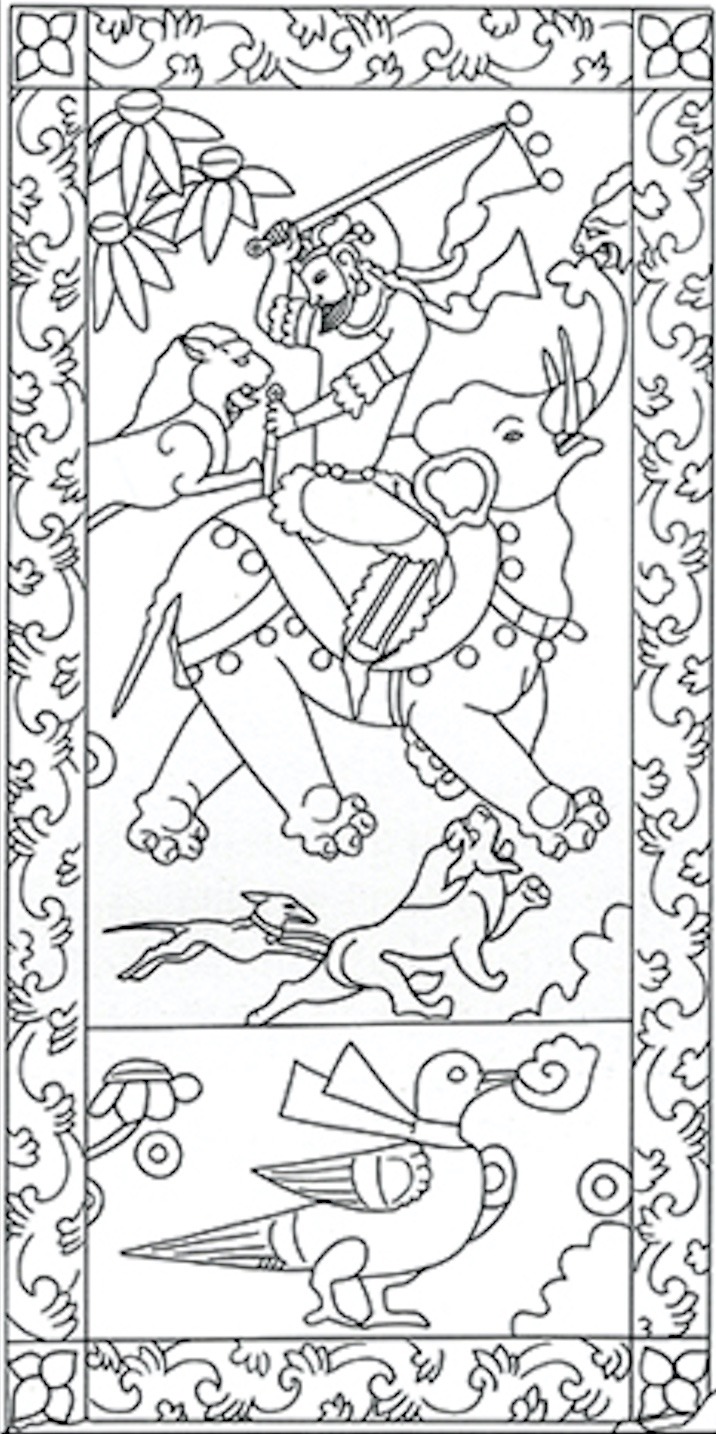
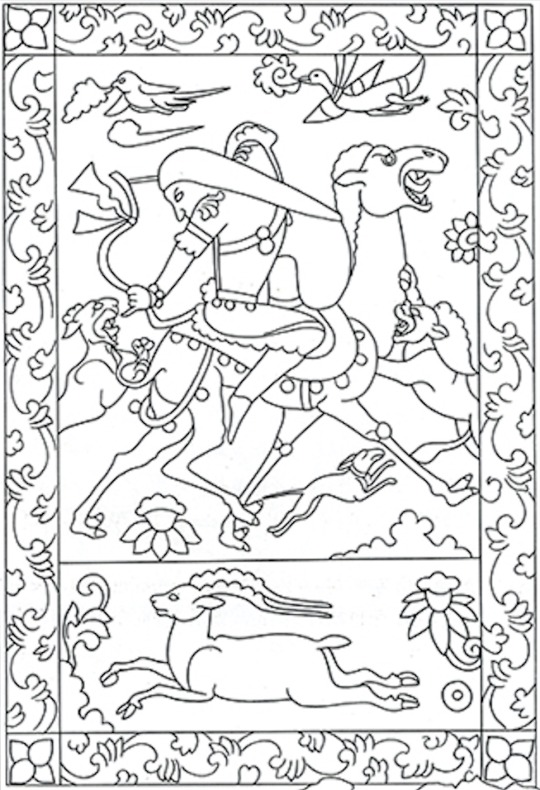



Tomb of Yu Hong 592-598 CE. Link to my blog at bottom with more sources and description of individual images.
This is probably a Sogdian tomb. Interestingly, the man has a haplogroup that was widespread amongst the blue-eyed Mesolithic/Neolithic Western Hunter Gatherers (WHG are probably where blue eyes originated from) and the haplogroup is found today most prominently in Sami, Finns, and Estonians. His wife has a haplogroup found prominently amongst East Asians. Based on her East Asian origins and the inclusion of some Turkic-looking people in the tomb's artwork I would assume she was probably a Turk, herself. The long-haired men without halos (e.g. panel 4) are probably Turks, that was a typical appearance for them during this time period. Men from other surrounding populations such as the Sogdians, Huns, Tocharians, etc. typically kept shorter hair that didn't go past their shoulders. More info:
"The man buried in the tomb went by Yu Hong (Chinese: 虞弘; pinyin: Yú Hóng; Wade–Giles: Yü Hung; 533–592 AD), with Mopan (莫潘) as his courtesy name, who was a Central Asian, probably of Persian or Sogdian origin, and practiced Zoroastrianism. He had settled in Early Middle Period China during the Northern Qi, Northern Zhou and Sui dynasties. This tomb is so far the only archaeological find in the Central Plains region that reflects Central Asian (Western Regions) culture. The epitaph found in the tomb records that he was a noble of the city of Yü-ho-lin / Yuhelin (尉紇驎) in the mysterious Yu country (魚國), assumably for which he is named, because the two characters 虞 and 魚 are homophones.
According to the epitaph, Yu Hong started his career in service of the nomadic tribe at the time, known as Ruru. At the age of 13, he was posted as an emissary to Persia by the Khagan of Ruru, as well as Parthia, Tuyuhun and Yuezhi. Later he went on a mission to the Northern Qi, Northern Zhou and Sui dynasties. He served as chien-chiao sa-pao fu / jianjiao sabao fu (檢校薩保府, lit. “acting director of the office of Zoroastrian affairs”, or “Sogdian affairs”) during the Northern Zhou period. The term sa-pao / sabao (薩保) comes from the Sogdian s′rtp′w, means a “caravan leader”.
He had later served as a provincial governor in the Sui dynasty government, a chieftain of the Central Asian people who had settled in China during that period. Yu Hong died at the age of 59 in 592 AD. His wife survived him by six years, and was buried in the same grave in 598 AD.
A study on ancient DNA reveals that Yu Hong belonged to the haplogroup U5, one of the oldest western Eurasian-specific haplogroups, while his wife can be classified as haplogroup G, the type prevalent in East Asia.
The age of U5 is estimated at between 25,000 and 35,000 years old, roughly corresponding to the Gravettian culture. Approximately 11% of Europeans (10% of European-Americans) have some variant of haplogroup U5.
U5 was the predominant mtDNA of mesolithic Western Hunter Gatherers (WHG) [this is where blue eyes probably originated from].
U5 has been found in human remains dating from the Mesolithic in England, Germany, Lithuania, Poland, Portugal, Russia, Sweden, France and Spain. Neolithic skeletons (~7,000 years old) that were excavated from the Avellaner cave in Catalonia, northeastern Spain included a specimen carrying haplogroup U5.
Haplogroup U5 and its subclades U5a and U5b today form the highest population concentrations in the far north, among Sami, Finns, and Estonians. However, it is spread widely at lower levels throughout Europe. This distribution, and the age of the haplogroup, indicate individuals belonging to this clade were part of the initial expansion tracking the retreat of ice sheets from Europe around 10,000 years ago.
U5 was the main haplogroup of mesolithic European hunter gatherers. U haplogroups were present at 83% in European hunter gatherers before influx of Middle Eastern farmer and steppe Indo-European ancestry decreased its frequency to less than 21%.
Today, haplogroup G is found at its highest frequency in indigenous populations of the lands surrounding the Sea of Okhotsk. It is an East Asian haplogroup. Haplogroup G is one of the most common mtDNA haplogroups among modern Ainu, Siberian, Mongol, Tibetan and Central and North Asian Turkic peoples people (as well as among people of the prehistoric Jōmon culture in Hokkaidō). It is also found at a lower frequency among many other populations of East Asia, Central Asia, Bangladesh, Sri Lanka, and Nepal. However, unlike other mitochondrial DNA haplogroups typical of populations of northeastern Asia, such as haplogroup A, haplogroup C, and haplogroup D, haplogroup G has not been found among indigenous peoples of the Americas."
-taken from Wikipedia
#sogdiana#indo european#ancient china#ancient history#antiquities#history#art#museums#sculpture#statue#ancient#turkic#eurasian#finnish#estonian#finno ugric#genetics
133 notes
·
View notes
Text
Tolkien scholarship is not only a "thing," but it is a great, big, expansive thing with essays on any topic you can imagine, sometimes bound up nicely in trade-paperback volumes.
Considering the kind of blog this is, I of course chose the volume about humor for this poll, but if you're bored and need something to stop you from endlessly scrolling tumblr for a little while, you might take some time to peruse the linked site and see if any essay titles catch your eye. There's guaranteed to be something to tickle the imagination of any Tolkien enthusiast.
Regarding the options, I had to truncate a few essay names, as the authors seem to use the same naming style as Webtoon comics, but you can see the complete list, the authors' names, and read the abstracts for each here.
#lotr#lord of the rings#poll#polls#tolkien#polls for especially nerdy nerds#don't worry there will be something less cerebral tomorrow#alternately#sorry there will be something less cerebral tomorrow
85 notes
·
View notes
Text
YA or not YA, that is the question...
This started out as a response to Diane’s post here about YA literature and its long history prior to what some people think inspired it, but got longer (Oh! What a surprise!) and wandered far enough from the initial subject that I decided to post separately.
So here it is.
*****
Many years ago my town library (in Northern Ireland, so following UK library practice, I suppose) had just two sections, Adult and Children. There was no YA section, and the Children’s section covered everything from large-format picture books through to hardback novels and the usual amount of non-fiction.
(Library books were almost always bought in hardback for better wear, and even the softback picture books were rebound with heavy card inserts.)
There were classics like “Treasure Island”, “Kidnapped”, “King Solomon’s Mines” “Under the Red Robe” and “The Jungle Books”.
There were standalone titles like “The Otterbury Incident”, “The Silver Sword”, “The Sword in the Stone” and “The Stone Cage”.
There were series about characters like William, Biggles, Jennings and his counterpart Molesworth, the Moomins, Narnia and Uncle.
There were authors like Alan Garner, Nicholas Stuart Grey, Rosemary Sutcliffe, Henry Treece, Ronald Welch… And of course there was J.R.R. Tolkien.
The first time I got "The Hobbit", "Farmer Giles of Ham" and "Smith of Wootton Major" they were shelved in the Children's section. This was about 1968-69.
In the early 1970s the library moved to larger premises, which allowed room for Very Young Children (where the picture books now lived) and Children (everything else), still with no YA section, though with more advanced picture books like “Tintin” and “Asterix” * in a sort of no-man’s-land between them.
( * These included editions in the original French, which turned out very useful for making language lessons at school a bit more fun and gaining extra marks in exams through judiciously enhanced vocabulary.)
“The Hobbit” et cetera were still on the Children shelves, but now that the library was larger and more open-plan, volumes of "The Lord of The Rings", normally in the Adult section, occasionally got shelved there as well by well-meaning non-staff people.
I never saw “The Hobbit” mis-shelved alongside “Lord of the Rings” among the Adults, but Farmer Giles” and “Smith” sometimes turned up there, courtesy of those same well-meaning hands.
It’s probably because the first, with its sometimes complex wordplay and mock-heroic plot, reads like a humorous parody of more serious works, while the second, if read in the right frame of mind, can seem quite adult in the style of Sylvia Townsend Warner’s “Kingdoms of Elfin” - which is in fact a good deal more adult than “Smith of Wootton Major”, even if you squint.
*****
This “Hobbit” / “Rings” confusion is a lightweight version of assuming a particular author writes every book for the same age-group. This is very much not the case.
Sometimes the thickness of the book is a giveaway. Compare, for instance, @neil-gaiman’s “American Gods” with “Coraline” or indeed “Fortunately, The Milk”.
Sometimes the cover is a hint, for example the difference between “Live and Let Die” by Ian Fleming...

...and “Chitty Chitty Bang Bang”, also by Ian Fleming...

...although the original James Bond novels are – apart from some extremely dated attitudes – a lot more weaksauce than many YA books nowadays.
(More weaksauce still now that Fleming, like Roald Dahl and Agatha Christie, has been censored to conceal the extent to which - let's call them Certain Attitudes - were a standard feature in British popular fiction. Apparently (I haven't read any Newspeak Bond so can't confirm) the redaction was done in a curiously slapdash way, removing some things while leaving others.
These novels have become, IMO anyway, period pieces as much as Kipling, Doyle, Dickens and Austen, and erasure probably has less to do with sensitivity - maybe with some "brush it under the rug and they'll forget about it" involved - than with keeping them marketable, so Fleming doesn't go the way of other once-bestselling writers like "Sapper" and Sydney Horler.)
It would also be a mistake, despite advisory wizards Tom and Carl, to think that @dduane’s “Young Wizards” books are meant for the same age-group as her “Middle Kingdoms” series – although, once again, the later YW books and all of the MK slot into what a modern YA audience expects from its fiction.
But sometimes there’s absolutely no doubt that This Book by This Author is not meant for the readership of That Book by The Same Author. I’m thinking of one example which caused a certain amount of amusement.
“Bee Hunter” by Robert Nye is a retelling of the Beowulf story for children, though IIRC occasional bloody episodes as Grendel takes Hrothgar’s housecarls apart make it more suited to older children.
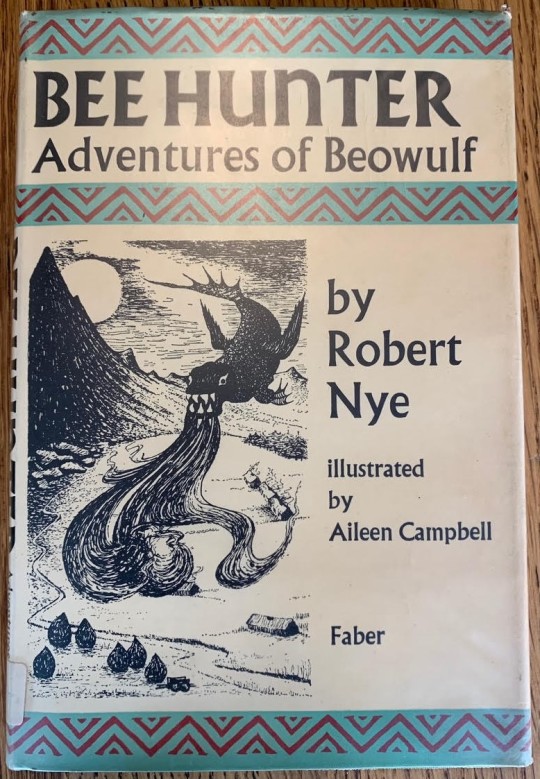
I’d brought home a copy from the library when much younger, and borrowed it again years later in company with another Nye novel, “Falstaff”...
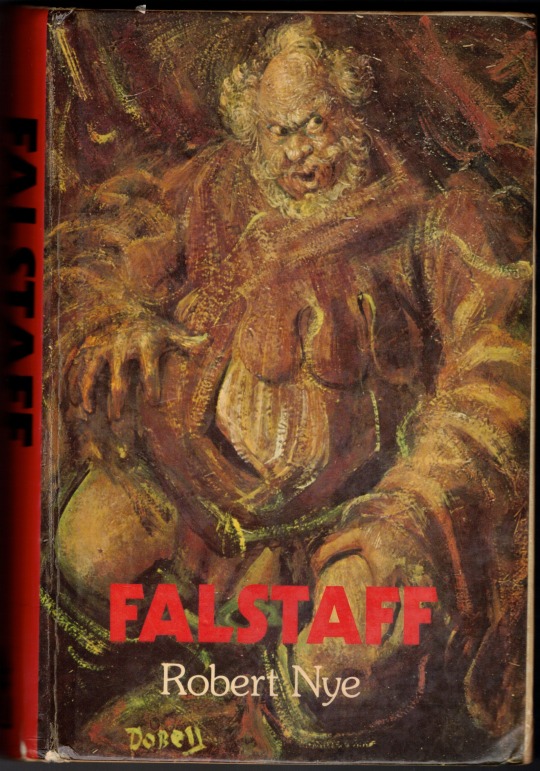
...which was poetic, historic, melancholic, often bawdy, frequently funny and at all times most emphatically NOT for children, as indicated by some of these chapter headings - I draw your attention to XX, XXII, XXXII and especially XL... ;->


Yes. Quite... :->
*****
I was familiar with card index systems from quite early in my life, because my grandfather’s grocer’s shop had a fairly simple one for keeping track of customers, suppliers, stock and so forth, and since the library’s index card system cross-referenced in the same way, I was already home and dry.

If I could remember a title, I'd find the author, and once found I could track down other titles by that author (which, as shown above, can be educational...) Even if I could only remember the subject - historical, adventure, comedy - I'd still have narrowed my search window more than somewhat.
(This from-here-to-there mindset later became virtual train travel by way of the electronic timetables which SBB – Swiss Railways – used to issue on CD, and which let me “travel” anywhere in Europe, complete with a map. Those CDs are long discontinued, but I can still do virtual travel courtesy of the SBB website. Complete with a map…)
This is the last one we got, kept for sentimental reasons and occasional outdated train-travel on an equally outdated XP netbook.

As you do.
Or as I do, anyway. :->
*****
I also knew about title request cards and interlibrary loans, and was a frequent user - never more so than when I started reading “The Lord of the Rings” for the first time.
The town library didn’t have all three volumes, just “The Fellowship of the Ring” and “The Two Towers”, so I checked them out on a Friday to read over the weekend.
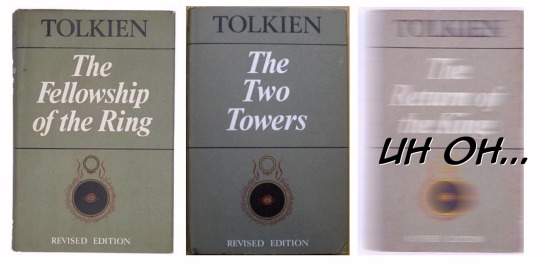
You can already see where this is going… :->
I finished “Fellowship” late on Saturday afternoon, went straight into “Towers” and by Sunday evening was all of a twitter (no, not that one) or as my mum would have said, up to high Doh, as I fretted about Not Knowing What Happened Next.
Fortunately school was no more than a brisk bike ride from the library, so I devoted my Monday morning break to zooming down and filling in one of the most urgent title requests I’ve ever made, then spent the rest of the week on tenterhooks, looking in every lunchtime and each afternoon on my way home.
Just In Case.
Some kindly librarian must have pulled strings or stamped the request "Expedite Soonest", because when I went back to school after Thursday lunch, I had “The Return of the King” burning a hole in my saddlebag.
I wanted to start reading it at once, but good sense prevailed; imagine getting caught between chapters at the back of a boring Geography lesson and Having The Book Confiscated…

I didn’t pay much attention in class on Friday, due to being half-asleep after starting “Return” in the evening after prep and finishing it in the wee hours of the morning.
But being tired didn’t prevent me from starting with “Fellowship” again on Friday night, and this time being able to read right through to the end without needing to stop.
It Was Great…
#YA books#library age categories#library use#don't judge a book by its cover#don't judge an age group by author#anecdotage
76 notes
·
View notes
Text
Fantasy fragments (1): J.R.R. Tolkien's Legendarium
J.R.R. Tolkien is without a doubt the father of the modern fantasy genre, and his world, especially his The Lord of the Rings, stays to this day one of the most famous and influential fantasy worlds of the 20th century. He is most renowned for building the "epic fantasy" genre with his The Lord of the Rings romance-saga, and his mythological Silmarillion, but his earlier works (The Hobbit, The Adventures of Tom Bombadil) rather reflect fairytale-fantasy and children-fantasy, while the recent publishing of his "Great Tales of the First Age" highlight more the "dark fantasy" aspect of Tolkien's unpublished work.
And even beyond his famous Legendarium, Tolkien wrote many more texts related to the fantasy genre - pseudo-medieval romances, children fairytales, poetic retellings of Beowulf, the Kalevala or the Arthurian legend...
Stories part of the Legendarium per se
The Hobbit (1937)
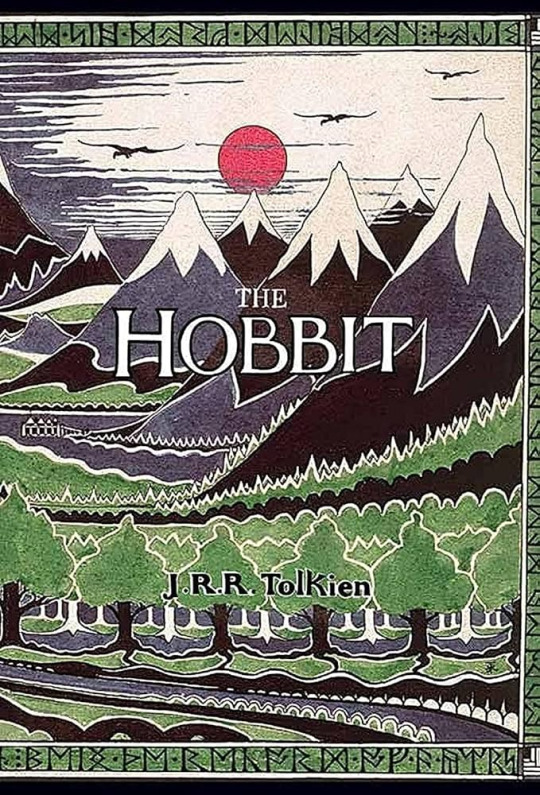
The Adventures of Tom Bombadil (1962)
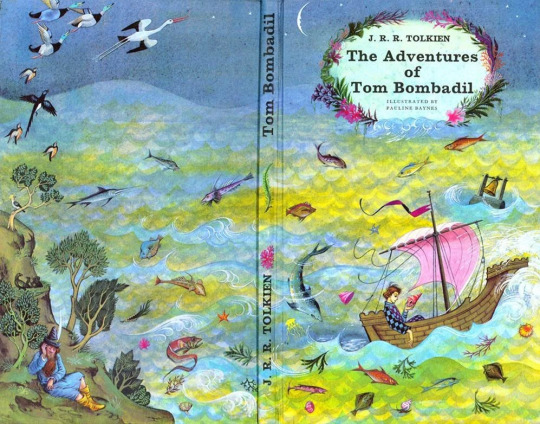
The Lord of the Rings (1954-55)



The Silmarillion (1977)
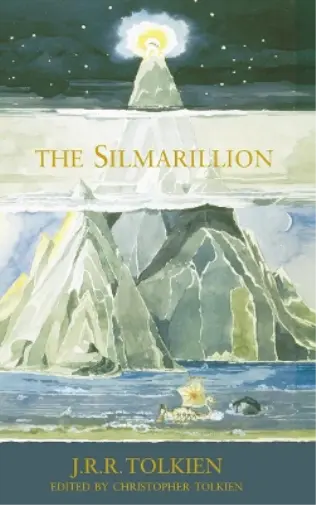
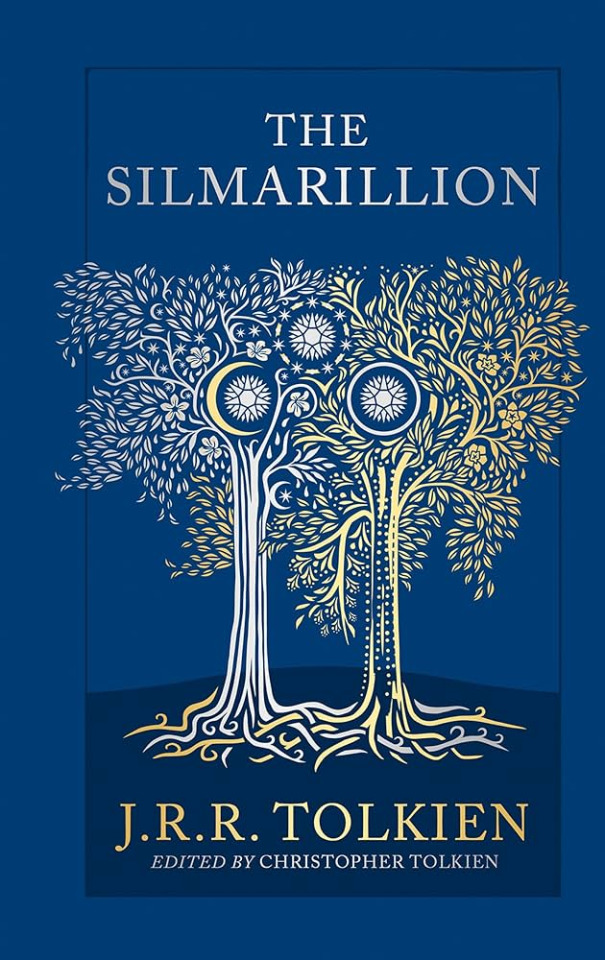
The Children of Hurin (2007)
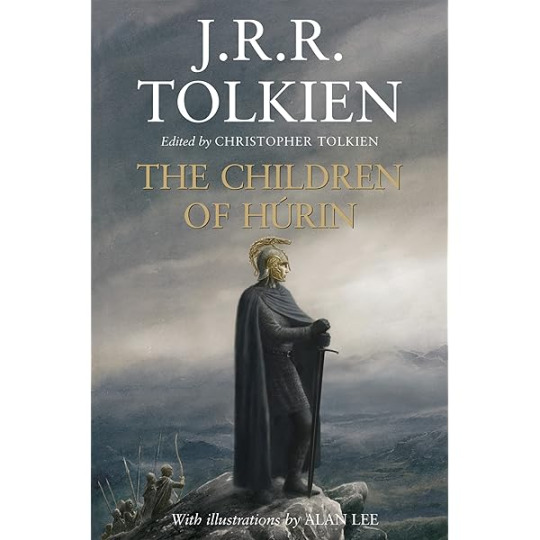
Beren and Luthien (2017)

The Fall of Gondolin (2018)
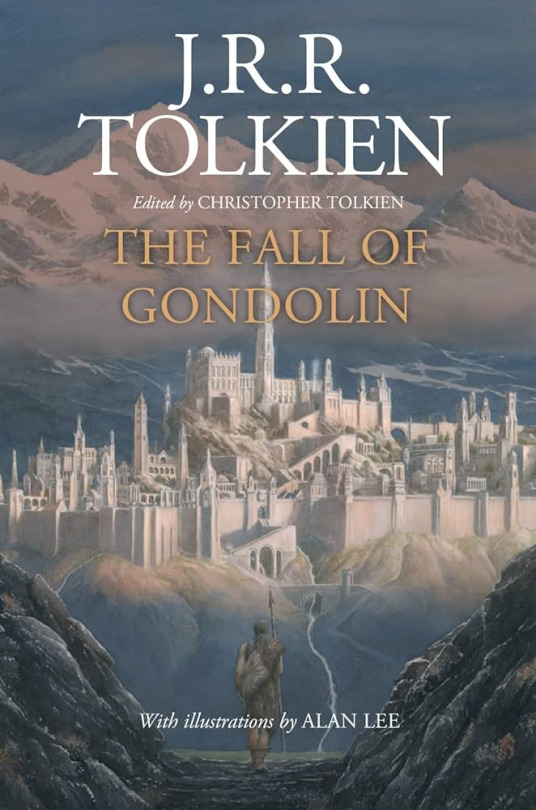
The Fall of Numenor (2022)

Other collections of stories, fragments, drafts and studies around the Legendarium:
Unfinished Tales of Numenor and Middle-Earth (1980)

The History of Middle-Earth (1983-1996)
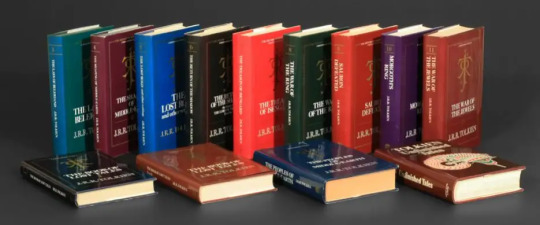
The History of the Hobbit (2007)
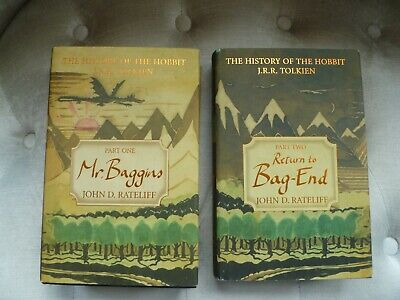
The Nature of Middle-Earth (2021)
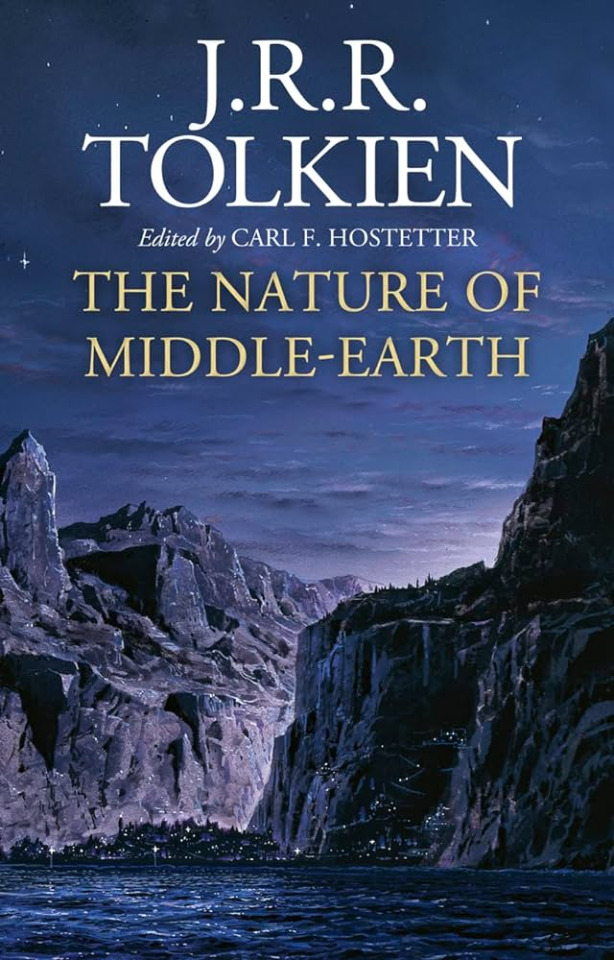
Non-Legendarium fantasy or fantasy-like texts of Tolkien:
The Lay of Aotrou and Itroun (1945)

Farmer Giles of Ham (1949)
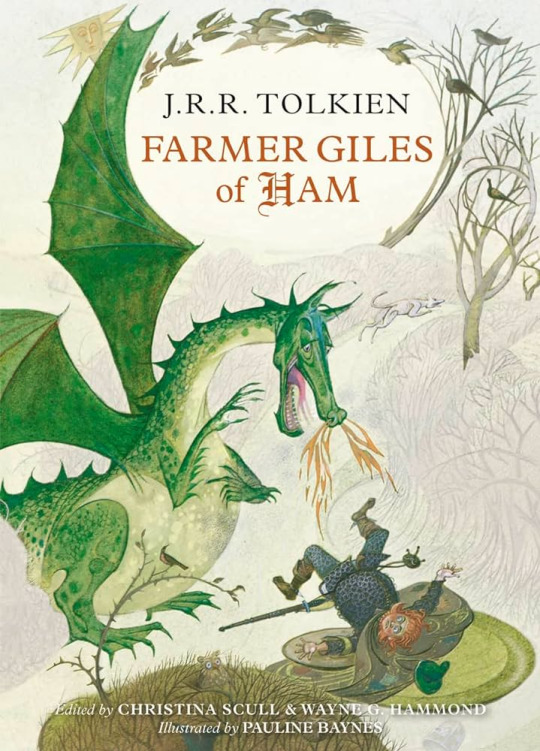
Tree and Leaf (1964, with augmented re-editions in 1988 and further)
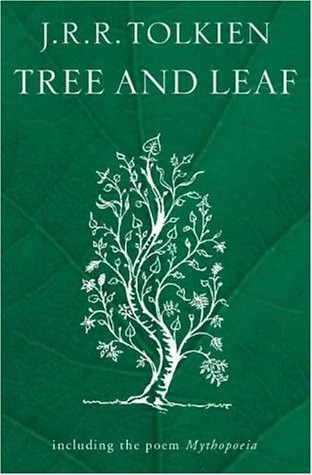
The Tolkien Reader (1966, collects several of the earlier works)

Smith of Wootton Major (1967)
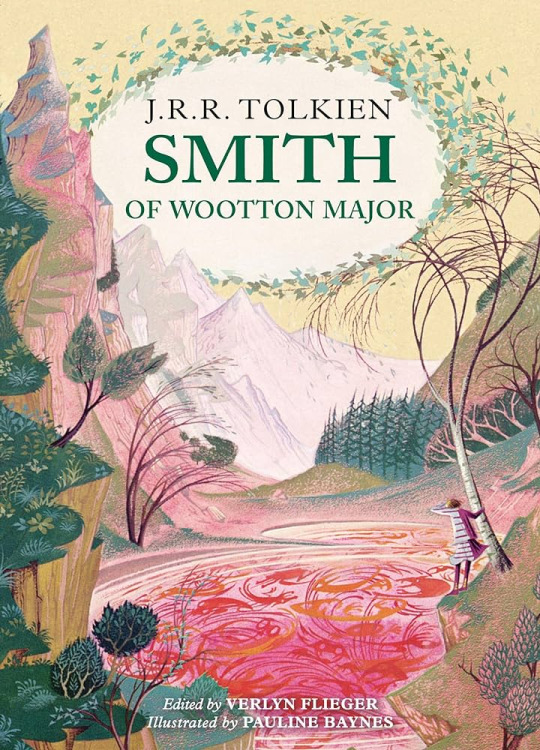
The Father Christmas Letters (1976)
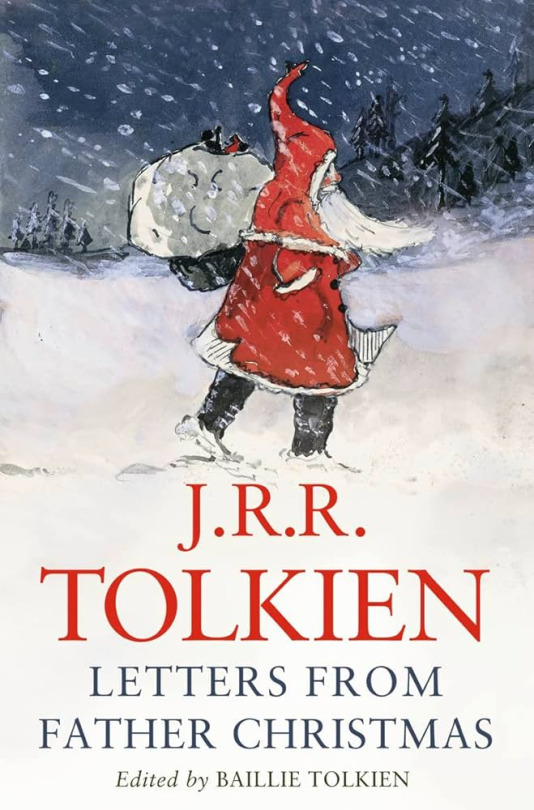
Roverandom (1998)
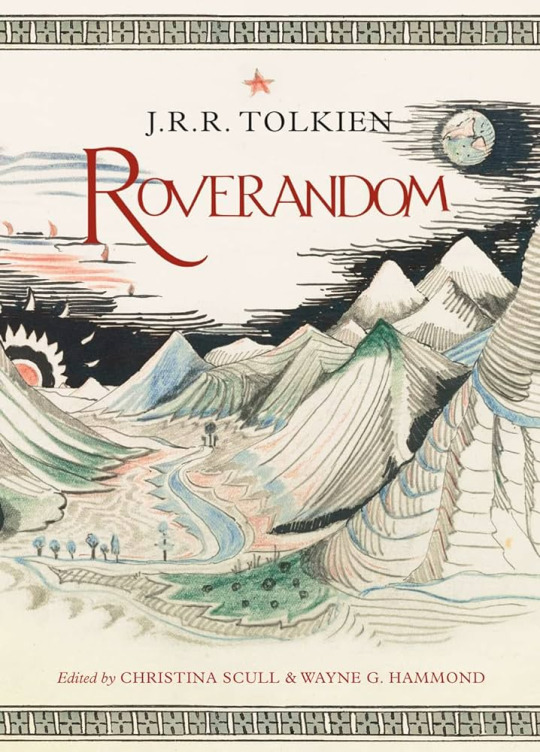
The Legend of Sigurd and Gudrun (2009)
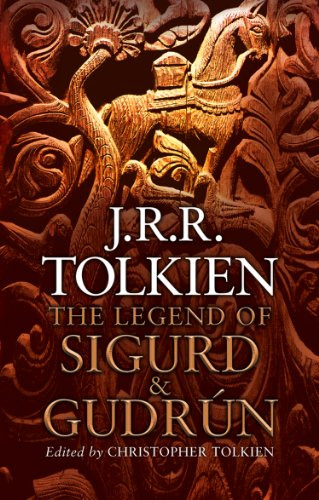
The Fall of Arthur (2013)

The Story of Kullervo (2015)
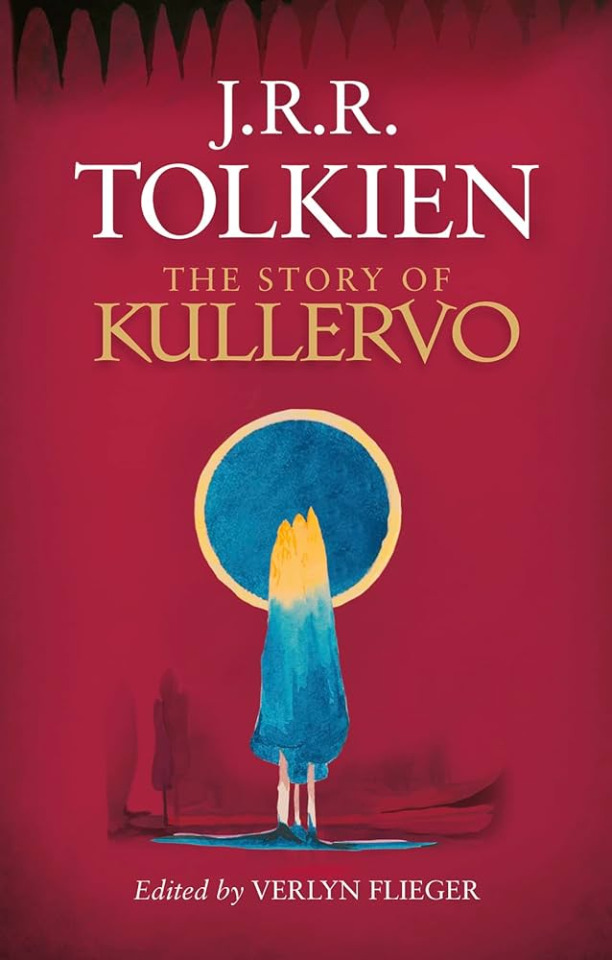
#fantasy#fantasy books#fantasy literature#fantasy fragments#j.r.r. tolkien#tolkien#legendarium#the lord of the rings#lotr
31 notes
·
View notes
Photo

HIDDEN PATHS: A Celebration of the Smaller Tolkien Canons
Hello, and welcome to Hidden Paths, a fortnight-long event dedicated to the celebration of smaller Tolkien canons!
We all know and love the tales of Tolkien's Middle-earth, but the Professor's creative and academic endeavours didn't stop there. However, fanworks for smaller Tolkien canons (such as Farmer Giles of Ham, Mr. Bliss, Leaf by Niggle and more) are much rarer than works inspired by their Middle-earth counterparts. This event was created to be a low-pressure, low-commitment opportunity to explore those lesser known works, and create and share fanworks based on them.
Define “smaller Tolkien fandoms”.
Basically, any Tolkien canon or text (including academic works and translations) that is not explicitly set in Middle-earth and is not based on The Hobbit, The Lord of the Rings, or The Silmarillion and closely related histories. This includes, but is not limited to:
Beowulf/Sellic Spell
Farmer Giles of Ham
The Fall of Arthur
The Father Christmas Letters
Finn and Hengest
The Homecoming of Beorhtnoth Beorhthelm's Son
The Lay of Aotrou and Itroun
Leaf by Niggle
The Legend of Sigurd and Gudrún
Mr. Bliss
Mythopoeia
The Notion Club Papers
Pearl
Roverandom
Sir Gawain and the Green Knight
Sir Orfeo
Songs for the Philologists
Smith of Wootton Major
The Story of Kullervo
Tolkien (2019 film)
Tolkien's essays, poems, letters and non-ME artwork
We also accept fanworks based on The Adventures of Tom Bombadil (because it collects a number of poems that were not originally intended as part of the Middle-earth canon) and The Book of Lost Tales (because it differs so significantly from later versions of the legendarium), and/or centring characters or concepts that only appear in extremely early drafts of The Lord of the Rings (e.g. Trotter).
We know that this leaves a bit of a grey area, but ultimately, we will trust and accept the judgement of fanwork creators. Act in good faith, and assume that others have done the same.
How does it work?
At the start of the event (14th February) the mod will post seven optional prompts to inspire you. There will be a thematic prompt, a character-based prompt, a setting-based prompt, a text prompt, a visual prompt, an audio prompt, and a wildcard prompt. A second batch of prompts will be posted on the 21st.
If you like the prompts, then use any or all of them to create and share a fanwork based on one or more small Tolkien canons. If they don't speak to you, then please feel free to do your own thing – the prompts are there to spark creativity, not impede it!
What types of fanworks do you accept?
Anything you like. Fic, poetry, meta, art, edits, vids, podfic, craft, cosplay, rec lists, playlists, compositions, interviews with fellow fans...it's all good.
Are there any minimum requirements?
No, none. Want to write a six-word story? Be our guest.
Are crossovers permitted?
Yes! We accept crossovers with the Middle-earth canons, and with non-Tolkien fandoms. We only ask that one of the smaller Tolkien canons plays a significant role in your fanwork.
What do you consider a significant role?
We don't. The event is intended to be low commitment and low stress for both participants and the moderator, and we trust that people will act in good faith. We are not going to police fanworks or apply an arbitrary definition of “significant” - we leave that up to the creator to decide.
Does actor RPF count?
For the purposes of this event, no it doesn't, unless you are also drawing on elements from a smaller canon (e.g. Liv Tyler encountering the Shadow-Bride).
Where do I post my fanworks?
We have an AO3 collection, but you may post your fanworks anywhere you like. We'd appreciate a link back to our Dreamwidth or Tumblr page, though, to spread the word about the event!
Are there any restrictions on rating or content?
Nope. Tag and warn appropriately, as you normally would, but make whatever your heart desires.
Can I post fanworks that were inspired by or created for another event, or created prior to the event's inception?
Yes! The goal is to celebrate and increase content for the smaller Tolkien fandoms. Please feel free to share your creations and add them to the collection, regardless of whether they were created specifically for this event.
I want to take part but I don't know anything about the smaller canons. Help!?
Tolkien Gateway has helpfully collated a list of Tolkien's writings, and some of the articles reproduce or link to the actual text. This is a great place to start browsing, and to find out more about a text before you invest in your own copy.
Have a look at fanworks for some of the smaller canons and see what appeals. Innumerable Stars and TRSB both have several works for the smaller canons in their collections, and many of them can be understood with no prior knowledge of the source material.
Lists of characters appearing in the various texts and canons can also be a useful jumping off point - like this one for The Book of Lost Tales.
Many of the smaller canons are just that - small! If you can get hold of a copy from your local library, book store or from a fellow fan, they are generally quick to read and digest.
If anyone has any other ideas and resources for folks wanting to dip a toe into the smaller canons, please get in touch so they can be added to this list.
When does the event run?
Officially, February 14th-28th. Unofficially, as long as you like; the prompts will stay up and the AO3 collection won't close.
148 notes
·
View notes
Text

Yesterday I read Smith of Wootton Major and today I’m going to read Farmer Giles of Ham, both written by J.R.R. Tolkien 😊
#godzilla reads#jrr tolkien#smith of wootton major#farmer giles of ham#fantasy books#reading#booklr#bookworm#bookish#book blog#booklover#bibliophile#book blurb
14 notes
·
View notes
Text

Illustration for Tolkien's Famer Giles of Ham by Pauline Diana Barnes.
3 notes
·
View notes